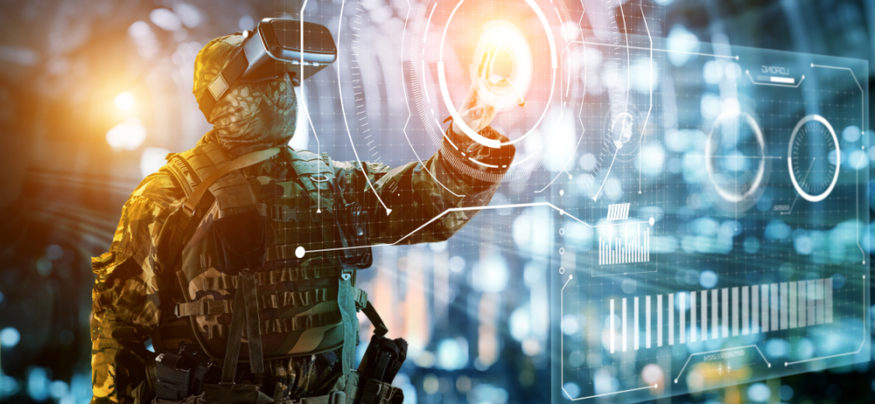2018 was a year marked by significant transition as we embraced a wave of disruptive technologies on a scale never before seen. The fourth industrial revolution has arrived. It is characterized by innovative technologies that are fusing the physical, digital and biological worlds; directly impacting economies and industries; and fundamentally changing the ways we work, live and relate. This revolution is permeating our lives, creating new and alternate realities, and extending personas through mobile endpoints while ingesting massive data volumes at blazing speeds.
As we embrace this change, and in anticipation of new government innovation in 2019, it’s important to reflect upon major market-shaping events and how they will influence advancements across edge and quantum computing, artificial intelligence (AI), the Internet of Things (IoT), autonomous entities, cloud infrastructure and applications, blockchain, cybersecurity, 5G networks, and more in the coming year. From improving veteran care to feeding the nation and monitoring roadway safety, here are some of the top digital transformation developments that helped shape the federal government in 2018.
Modernization Funding Began to Flow
This year, the Technology Modernization Fund (TMF) pushed through grants to provide agencies access to multi-year revenue for infrastructure modernization. From AI to IoT, agencies began looking at new projects that will help transform government operations. So far, according to the TMF website, the fund has awarded projects at agencies including the Departments of Agriculture (USDA), Energy (DOE), and Housing and Urban Development (HUD), with other agencies following suit.
As Gary Washington, chief information officer (CIO) at USDA, told MeriTalk, “Going through this process, from a people, process and technology perspective, has injected a lot of energy into USDA and opened up the art of the possible.” For example, the agency launched Farmers.gov and pushed forward on its USDA Information Technology Strategic Plan to align IT investments with mission and business priorities, particularly in shared services promotion, actionable intelligence production, cloud-based service delivery enhancement, mobile workforce enablement and more. Additional USDA advancements underway include experimenting with AI in contact centers, according to FedTech Magazine; collecting field data from IoT sensors, according to FedTech Magazine; delivering analytics dashboards to improve internal operations, according to Government Computer News; and more.
Data Became a Strategic Federal Priority
2018 was a big year for big data. Related efforts were formalized in March when the administration laid out a new Cross-Agency Priority (CAP) Goal: Leveraging Data as a Strategic Asset to develop and implement a comprehensive Federal Data Strategy. As Margaret Weichert, deputy director for management at the Office of Management and Budget (OMB), told FedScoop, data efforts can “drive real change and transform how the federal government leverages data to enhance mission delivery and service while providing a foundation for economic growth.”
Transform Your Tactical Operations With Mobility
Discover how DoD is deploying mobile technologies to enhance and streamline tactical operations. Download Now
For example, the U.S. Census Bureau’s Longitudinal Employer-Household Dynamics (LEHD) project, which examines worker, employer and job information, has been recognized by many as a leading example of how data can help state and local authorities make better economic decisions faster, according to FedScoop. Data projects are also transforming areas such as healthcare. In the fall, Veterans Affairs (VA) and Department of Defense (DoD) leaders signed the Electronic Health Record Modernization Joint Commitment statement, an agreement to align strategies for the rollout of a new interoperable electronic health record (EHR) that will seamlessly share patient data between the departments. The initiative will transform the lifetime care of service members by giving providers a fuller picture of a patient’s medical history and incorporating new capabilities, such as mobile, to support improved clinical outcomes.
Concurrently, we saw the rise of the federal chief data officer (CDO) as agencies looked to formalize how they integrate data systems, increase analytics capabilities, promote transparency and widen open data initiatives. For example, Dr. Mona Siddiqui, the CDO at the U.S. Department of Health and Human Services (HHS) is spearheading the Data Initiative, an effort to make the organization more data-driven and provide more information to the public to improve health outcomes. The Department of Transportation (DOT), under the helm of its CDO, Daniel Morgan, is similarly advancing efforts to centralize information on road conditions, the amount of cars traveling our highways and more to improve transportation safety across the nation, according to FedScoop.
Mobility and data will continue to go hand-in-hand for these agency leaders as they look to collect information and put insights to work. For example, field data collection is mission-critical to agencies like the Census Bureau that need to capture data from doorstep to doorstep. Likewise, USDA food and safety inspectors are using mobile devices to take notes and submit paperwork as they travel from farms to processing plants.
Endpoint Security Topped Cyber Agendas
According to a joint study between Samsung, CyberScoop and FedScoop launched earlier this year, more than half of agency IT officials are concerned about network attacks originating from endpoint devices. Findings like these reinforced the notion that agencies are still in the midst of navigating the Wild West when it comes to endpoint security, especially as we expand the standard definition beyond laptops and phones to include tanks, jets, drones and other non-weapon devices connected by sensors.
As personnel are provided choice with regard to using their personal mobile devices in their respective work environments and agencies deploy new technologies such as IoT, security leaders are being forced to reevaluate their data protection strategies to manage an ever-expanding digital surface area that is vulnerable to attack. In September, the National Institute of Standards and Technology (NIST) released its “Considerations for Managing Internet of Things (IoT) Cybersecurity and Privacy Risks” to provide additional guidance and clarification to agencies through these continuing trends, and we expect to see additional developments in this critical area in 2019.
Government Confronted the Next Industrial Revolution
5G will be a disruptive force in shaping the modern, data-driven government enterprise. From the connected base to the smart soldier, 5G networks’ high-bandwidth and low-latency capabilities will drive major advancements in AI, IoT, cloud and mobile technologies to enable a more connected government. “For years, we’ve talked about the convergence of all of this, and it’s actually happening now with 5G,” said Tim Baxter, president and CEO of Samsung Electronics North America, at this fall’s Northern Virginia Technology Council Tech Titans breakfast.
Next year is poised to be particularly exciting as agencies evaluate technical requirements and develop plans for implementing a 5G-powered IT modernization vision that will allow them to push the boundaries of mission performance. For example, AI-powered augmented (AR), mixed (MR) and virtual reality (VR) solutions will allow soldiers to gain access to high-fidelity training that will help them better prepare for the fight; IoT sensors will be used throughout the federal supply chain to pinpoint assets in real time, verify supply chain authenticity and secure goods as they travel across the globe; wearables will monitor a soldiers’ biometric activity to ensure battlefield health, safety and performance; and more. 2019 will set the stage for 5G network deployments that will foster federal innovation and produce compelling breakthroughs for decades to come.
Learn how Samsung’s government technology solutions can assist agencies with their digital transformation and accelerate innovation in the coming years.








